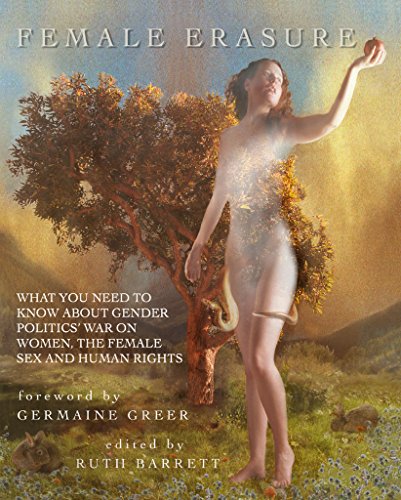Review: Female Erasure
Regular readers of this blog are aware of what I think about censorship. (I don’t like it, even if you think your views are correct.) When the forthcoming publication of Female Erasure was announced less than a year ago, an attempt was made to derail editor Ruth Barrett’s fundraising for the book through Indiegogo, thereby guaranteeing that I would order an advance copy and review the book. Barrett is a well-known Dianic priestess who has received a great deal of criticism, harassment, and no-platforming for her defense of born-women-only space.
I was impressed with the thickness of the book in this age of slim cost-conscious publishing. I read some feminist theory, and I have followed this issue closely for the past five years, so I had already read many of the excerpts in the volume. Still there were a lot of new articles here.
I think the crux of the issue of transgender rights clashing with the rights of females is described in the article by attorney Maya Dillard Smith, “Federal Court’s Denial of Obama’s Transgender Bathroom Directive A Win for Everyone.” Obama’s directive on transgender rights was made without the customary public input period for Federal rules, forcing agencies and citizens to comply without debate or comment. Dillard Smith is discussing this from a US Federal legal perspective, of course, but her insights apply to a variety of religous, social, educational, and legal situations. “Trans women are women; end of discussion,” transgender advocates have decreed in exactly those words, demanding public adoption of this belief with no examination of what it implies. The contributors to this anthology have disobeyed this injunction by exploring some uncomfortable implications of transgender advocacy for the rights of biological females.
Some of the issues covered in the book are transitioning of gay children, lesbian rights, reproductive issues, prisons, girls’ athletics, racial perspectives, and feminist political organizing. I found Carol Downer’s explanation of the philosophical underpinnings of transgender “queer” theory helpful, though dense and difficult as all queer theory tends to be. Many will be interested in Barrett’s “The Attack on Female Sovereign Space in Pagan Community.” Too many people think they understand this issue through oversimplified slogans about “inclusivity.” Barrett and many other writers here take the trouble to explain the history and background behind feminist positions.
Other contributors are lawyers, feminist theorists, journalists, medical professionals, activists, parents, and detransitioned adults. For people who think transgender issues are only about bathrooms, this book is required reading.

